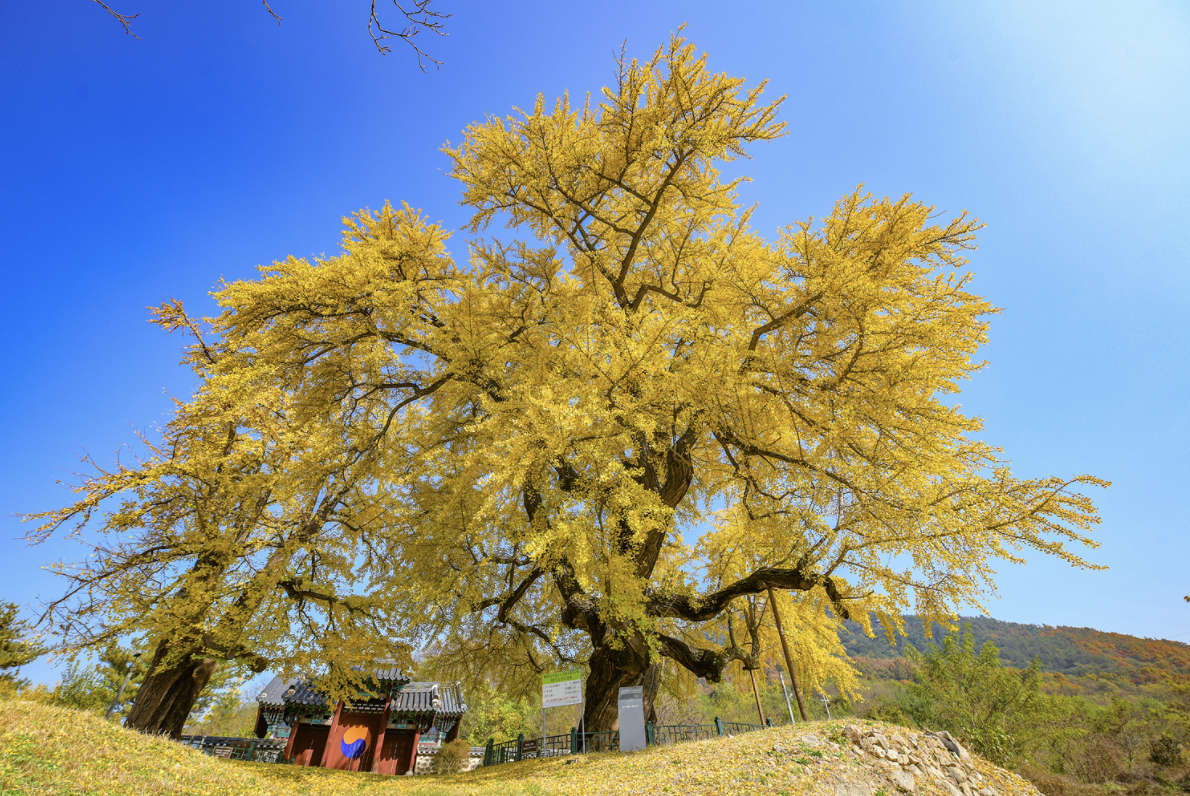Ancient history of Gingko Trees
The tourism industry around Gingko trees will be revitalized

[ 해외 특파원 1기 / 박소민 ] On March 3rd 2022, the Cultural Heritage Administration of South Korea changed the name of ‘Yeongi Sejong-ri Ginkgo Tree’ to ‘Sejong Sejong-ri Ginkgo Tree’ and announced that it would be designated as a national cultural heritage natural monument following being designated as Monument Number 8 of Sejong Special Self-Governing City on December 31, 2012.
This ginkgo tree, newly designated as a natural monument this year, is the first in Sejong New Town, and the second in Sejong City after the juniper tree in Bongsan-ri, Jochiwon-eup. This tree is located in front of Imnansu Shrine in Sejong-ri, Yeongi-myeon. The growth condition of the tree is 5.8m and 4.55m in circumference, 22m and 18m in height, and 327.1m2 in area, respectively.
The history of trees begins in the Joseon Dynasty period. On Woodblock Island, which is handed down to the Imnansu family, records of a considerable size of ginkgo trees and administrative records and paintings of the ginkgo trees are handed down in front of the shrine, suggesting that the age of the ginkgo tree in Sejong-ri is at least 347 years.
This ginkgo tree was planted by General Lim Nan-soo, who contributed to the conquest of Tamna (now known as Jeju Island) at the end of the Goryeo Dynasty, thinking of the destroyed Goryeo Dynasty. When King Taejo Lee Seong-gye founded Joseon, he abandoned his government post and retired to Samgi Village along the Geumgang River in Gongju, and Lee Seong-gye gave him a government post several times to summon, but he did not respond until the end and kept fidelity for Goryeo. It is considered a symbol of loyalty as a pair of male and female ginkgo trees planted at this time grow abundantly until today, more than 600 years later.
In the area where the ginkgo tree is located, the existing land was purchased from LH due to the development of the administrative complex city, and all surrounding houses were demolished. In the future, Sejong-si plans to create an area containing the Sejong-ri ginkgo tree as a historical park and plans to use it as a tourist attraction by linking Sejong National Arboretum, Central Park, and Sejong Assembly to Temple Stay.
In 2009, 576 animals, plants, geological formations and nature reserves were assigned as National Culture Heritage Natural Monument. Currently, approximately 404 reserves are maintained. The gingko tree will be actively managed with local governments and local residents to preserve and utilize natural heritage from now on.





